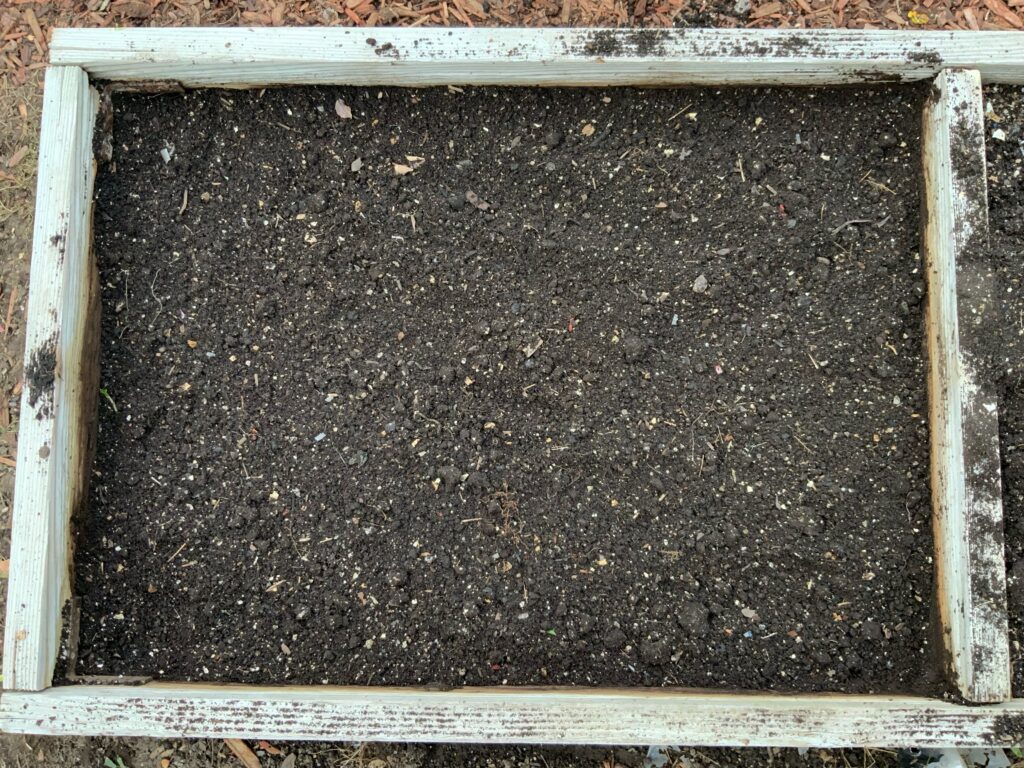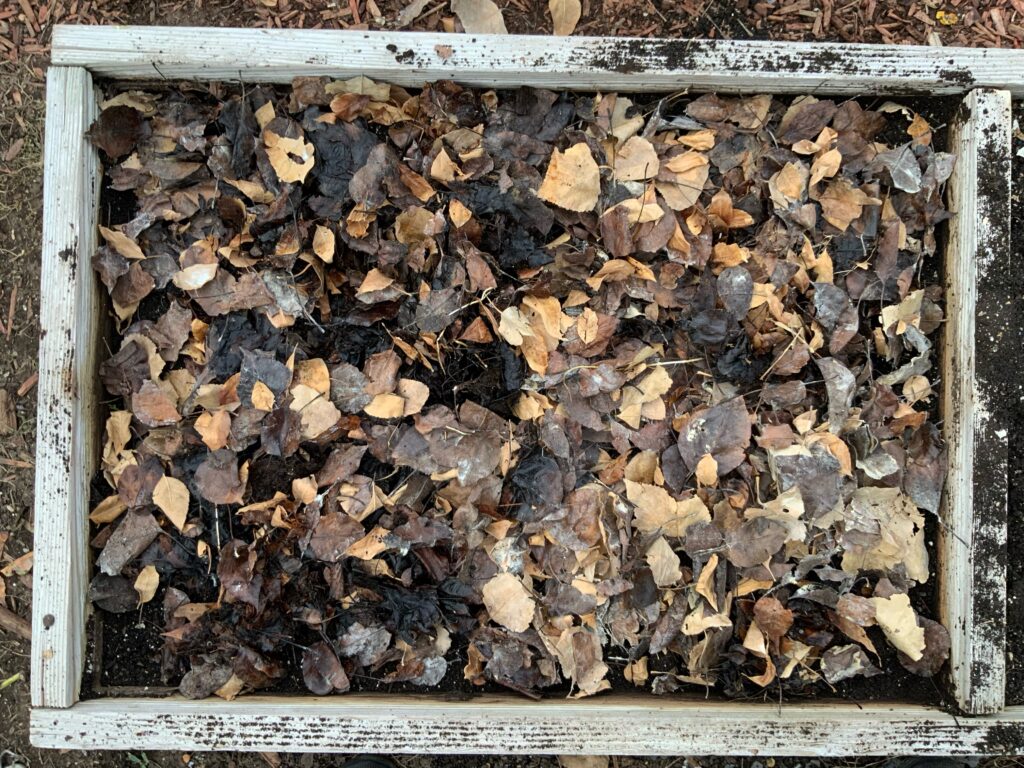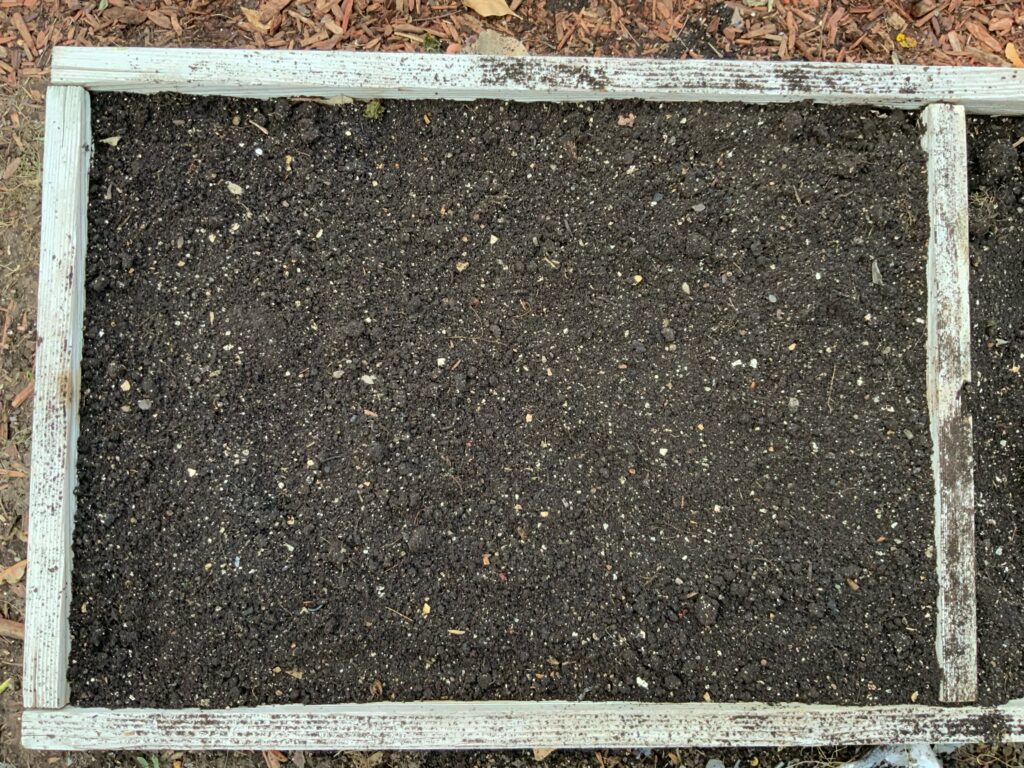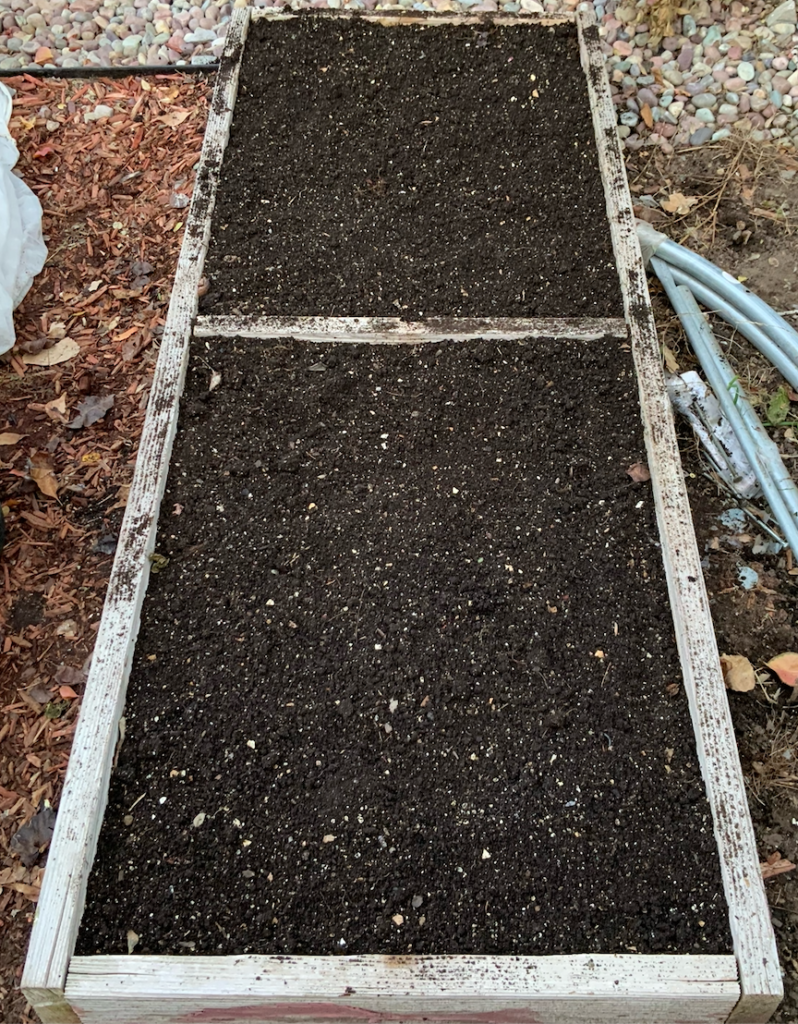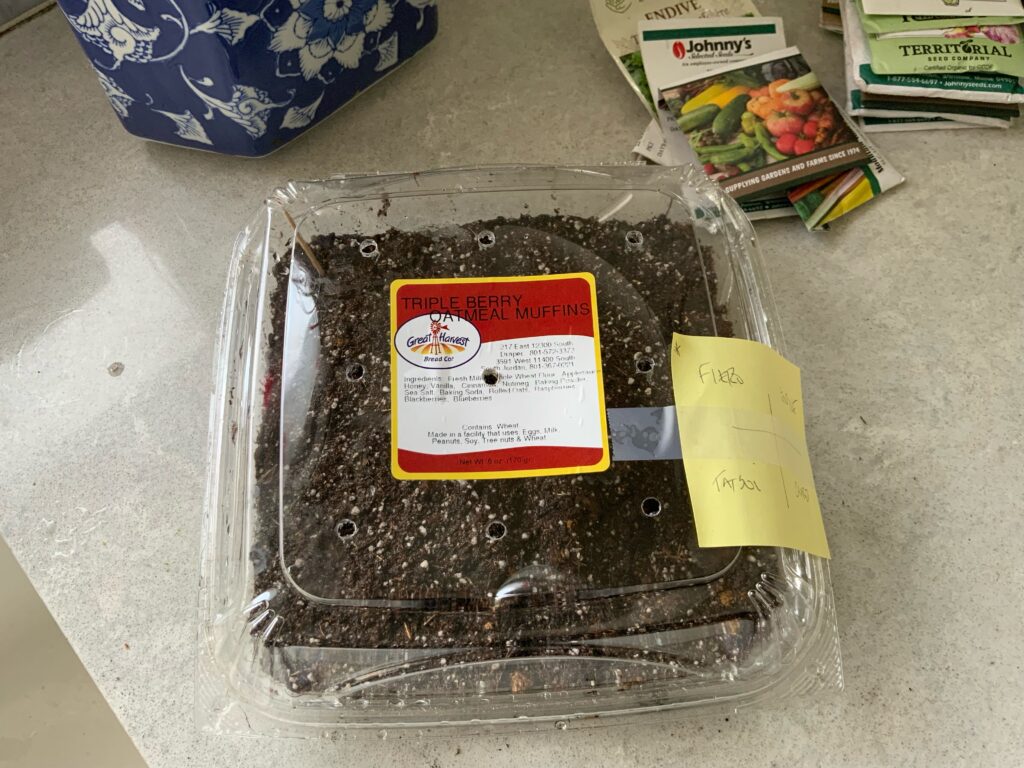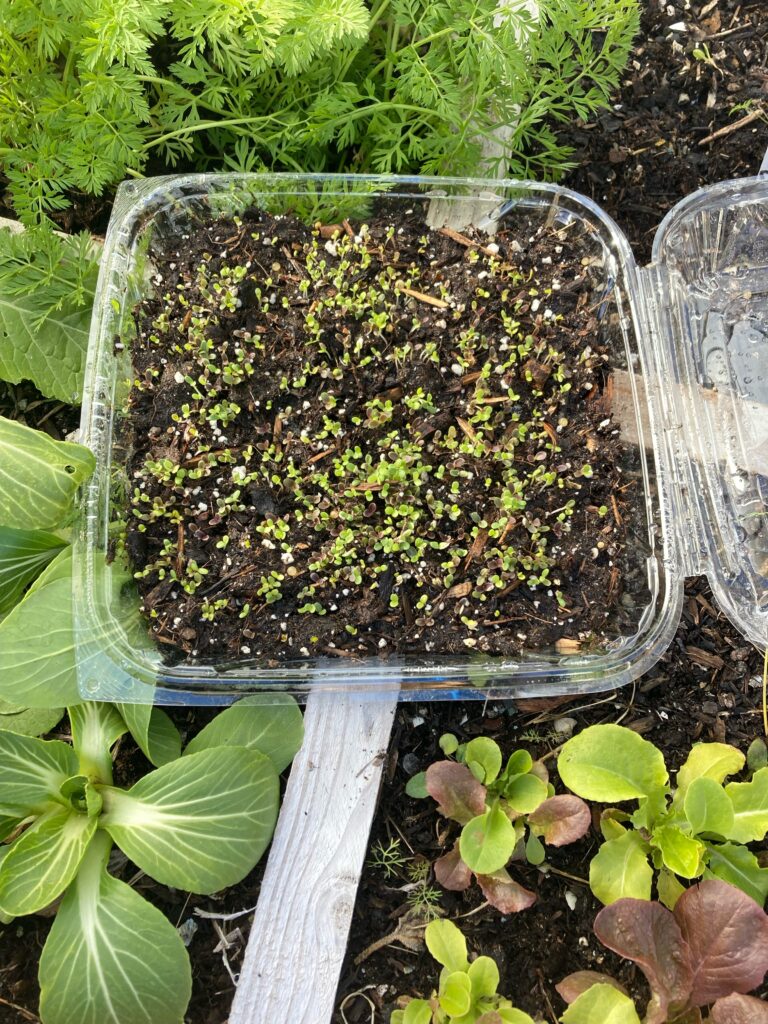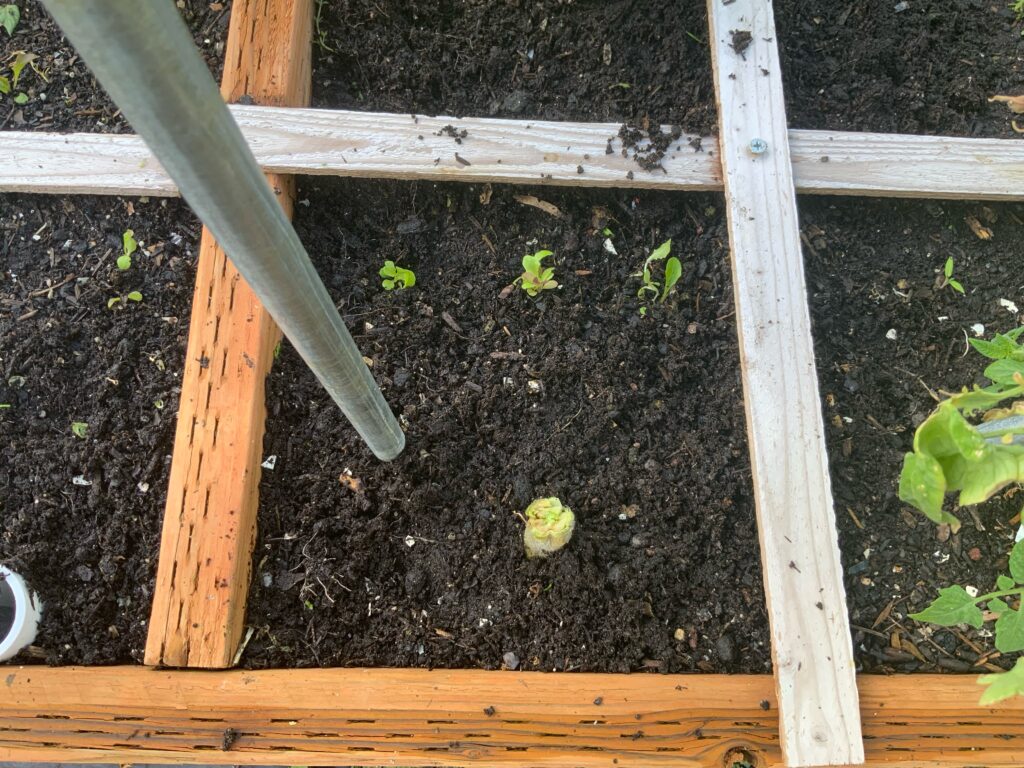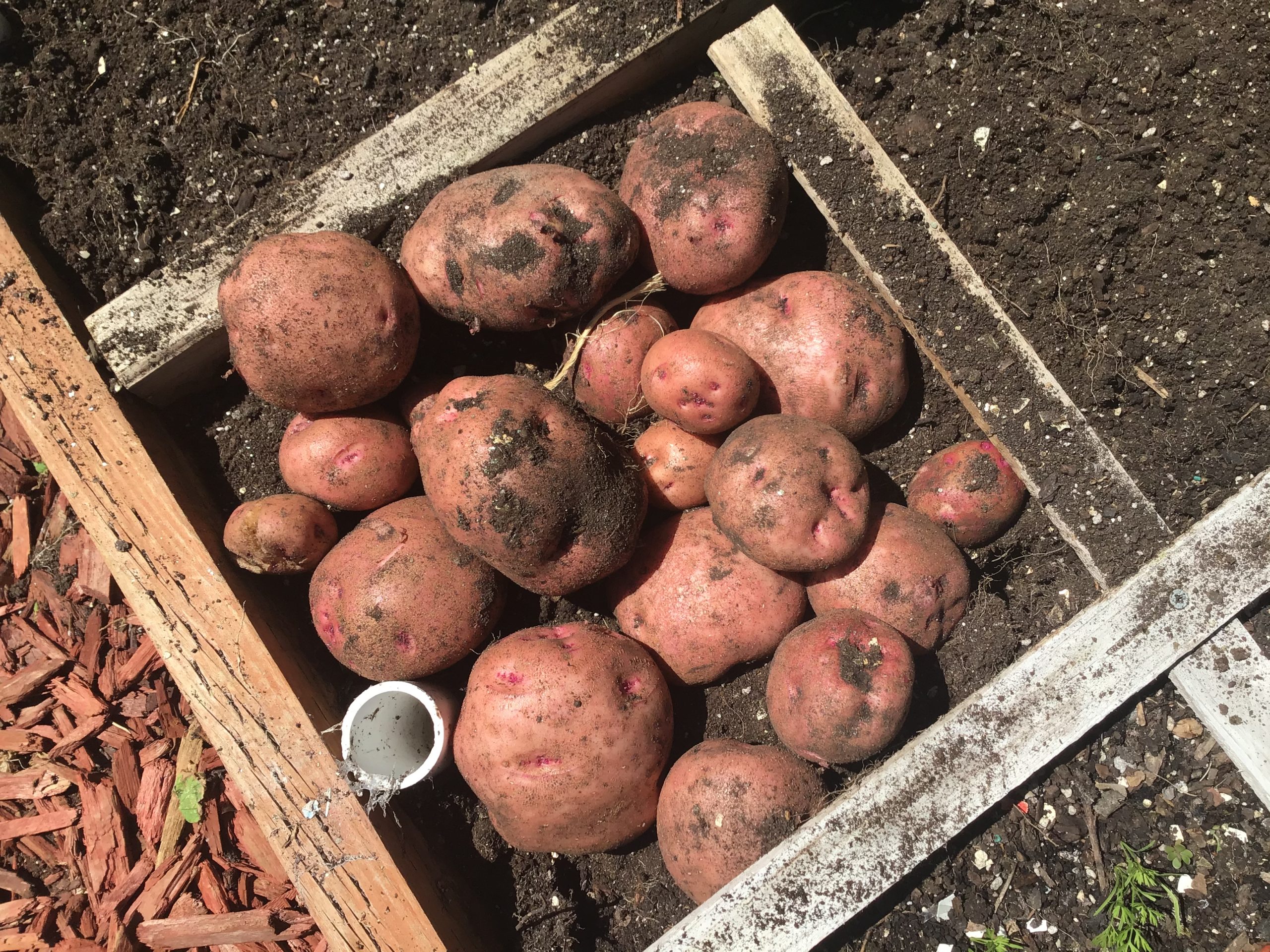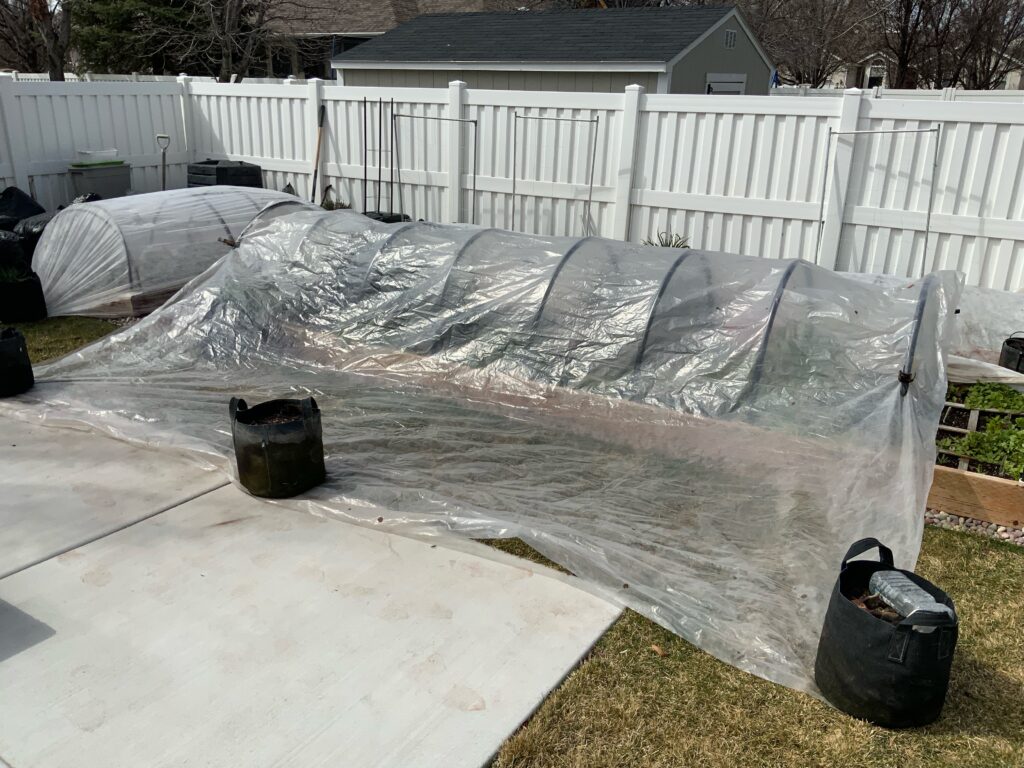 For years it’s always been a problem to clean off the plastic which has covered my winter garden for 4-1/2 months. They’re a real mess. Melted snow mixed with mud, birds flying overhead, worms all over the place, your muddied footprints, etc. If you wash them down and don’t let them dry you end up with algae on the plastic when it’s time to use them again. If you don’t hose them down they look terrible with caked on mud, leaves, dirt, etc.
For years it’s always been a problem to clean off the plastic which has covered my winter garden for 4-1/2 months. They’re a real mess. Melted snow mixed with mud, birds flying overhead, worms all over the place, your muddied footprints, etc. If you wash them down and don’t let them dry you end up with algae on the plastic when it’s time to use them again. If you don’t hose them down they look terrible with caked on mud, leaves, dirt, etc.
Using just spring clamps to hold the plastic down on each end and grow bags to hold the other ends down, I can easily wash front and back and let them dry in the sun. It only takes about 20-25 minutes to dry out. I have the back opened up so it doesn’t get too hot. Then it’s just a matter of folding them up and putting them away until needed.
Hosing and cleaning plastic is always a challenge when you lay it on the ground. You have to anchor all the corners and then you have pooled water all over on the surface. You lift up and shake the plastic and then the wind catches it like a parachute. Having these quickly erected poly tunnels make things so easy. I can now clean my plastic without worrying about wind and pooled water everywhere.
Another reason to take one of my upcoming fall or winter gardening classes, all of which will be posted right here on my blog.
